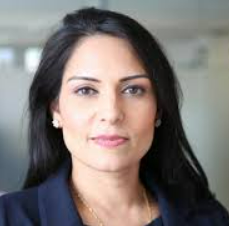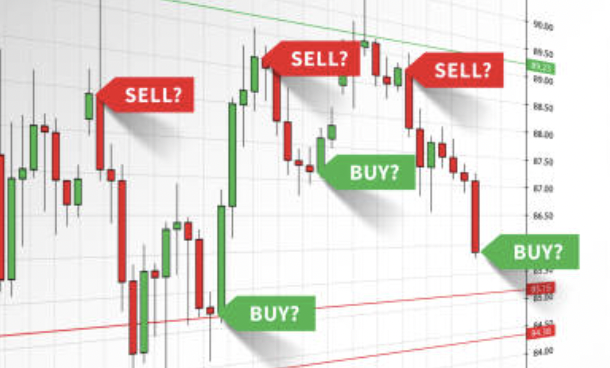
Charlie Brooks
Mar 22, 2022 14:28

Assume you paid $28.91 for a share of AT&T (T). AT&T now pays a dividend of $2.08 per share on an annual basis.
Simply divide: to get the dividend yield.
Dividend Yield / Share Price
In our scenario, $2.08/$28.91 = 0.0719, giving you a dividend yield of 7.19 percent.
The initial conclusion for new investors is that a larger dividend yield percentage makes for a better investment.
The modest 2-3 percent yearly dividend given by top executives is nothing to sneeze at when compared to the interest rates paid out by banks, but it's a fraction of what some other companies pay their shareholders. So, why even explore the lower-yielding alternatives?

As it turns out, some of the most dependable dividends are paid by firms that give up to a 6% yield. Those are good rates that might assist you in meeting your $500 monthly target.
As you research your investing possibilities, you will come across several firms that promise to give significantly greater dividend yield percentages. Some will give out as much as a 10% yield. It is not difficult to pay an extremely high percentage. However, it is exceedingly unlikely to endure long.
Take a hard look at a firm's financial history before purchasing stock in a company that boasts a dividend yield percentage of more than 7%. Compare the real rate against the reported rate as far back as you can. It's very possible that something fundamentally incorrect in the company's operations has led its price to fall and its yield to climb.
The higher the proportion, especially over 7-8%, the more probable the firm will have a problem with its principal business model, at least in the medium future.
At 5-6 percent, you may definitely sleep well, but there's no alternative for thorough study to determine why one firm pays a yield as high as 6 percent while another pays dividends worth half that amount or less.
A corporation that claims to give 10% may wind up paying you 10% in dividends but charging you more in share price returns.
A monthly dividend portfolio comprising carefully chosen equities, mutual funds, and other dividend-paying investments. When selecting investments, consider when they pay dividends so that you receive them each month of the year.
There are differing views on whether this is a viable investing approach. Some people prefer alternative ways to investing. Finally, you must evaluate whether establishing a monthly dividend portfolio aligns with your financial objectives and risk tolerance.
When choosing stocks and investments, keep in mind that no dividend is 100% certain to pay based on its previous history; nonetheless, the payment pattern is more likely to continue in the future.
If you don't already have a brokerage account, the first thing you should do is open one. Examine the brokerage firm's trading commission costs and minimal standards. Many prominent brokerage firms decreased their transaction fees to $0 per trade in 2019.
The elimination of trade commissions is fantastic news for you since it allows you to develop your dividend portfolio with smaller purchases without incurring expenses.
Also, clarify any account balance minimums, as some firms charge a fee for having an account if the balance falls below a particular amount. Many organizations dropped their balance minimums to $0 in 2019, but always double-check this as well.
When you create your account and begin your approach, you must determine whether you want to open a conventional brokerage account or a tax-deferred retirement account. Consider speaking with your preferred tax professional to see what makes the most sense for your individual circumstances.

Finally, confirm how to make a direct deposit into your new account as well as how to set up a transfer from your existing checking account. Consistently adding to an investing portfolio of any size is essential. By removing a step from the process, automation makes it easier to achieve your goals. If your company does not provide direct deposit, you can transfer funds from your checking account as an alternative.
If you have cash available to contribute to your portfolio, begin transferring it to your new account as soon as it becomes available. Next, examine your budget to determine how much you can invest each month.
To earn $500 per month in dividends, you'll need to invest around $200,000 in dividend equities. The precise amount will be determined by the dividend yields of the equities you choose for your portfolio.
Examine your budget carefully and determine how much money you can set away each month to expand your portfolio. Given the significant amount of money you'll need to attain your $500 monthly dividend objective, adding to your portfolio on a regular basis will assist.
The amount of money you have available to invest each month will influence how long it takes you to attain your objective.
Set away what you can if your budget is currently tight. Begin with a tiny amount so that you have something.
Next, go through your budget to see if there are any areas where you can cut costs so that you may invest that money instead.
Consider establishing a smaller, short-term dividend target so that you can show progress toward your broader goal. Maybe $50 or $100 per month in dividends is a goal you can achieve this year. It's a wonderful starting point for constructing a larger monthly dividend portfolio in the future.
Did your fortieth birthday sneak up on you? Are you ready to start working on your major money goals?
Get your brokerage account's direct deposit information so you can amend your pay instructions. Because you still need money in your normal checking account, your company should enable you to divide your income in a few different ways. Make sure to pay your expenses as well as invest in your future income!
If you've exhausted your paycheck instructions or your brokerage firm doesn't offer clear direct deposit instructions, you should be able to put up free account transfer instructions inside your brokerage account. Set a reminder on your calendar for each payday to transfer the money you wish to invest manually. If the initial choice is not accessible, there is usually a backup plan.
Stock picking is a very personal decision that necessitates study on each firm in which you choose to invest. When putting together a dividend portfolio, keep the following factors in mind for each company:
The health of the firm
How long they've been paying a dividend, as well as the history of payment increases
How effectively their profits support their dividend payments
The business's industry
The health and earnings of the firm can help you determine how secure future dividend payments are. When deciding which stocks to buy, it is critical to conduct research on the company and read feedback.
The dividend history and payment rise tendencies indicate when the firm will most likely pay dividends in the future. Stocks with growing dividends can potentially help you reach your dividend targets by snowballing.
Finally, understanding the industries in which the firms you choose to invest in helps you to build a well-balanced and varied portfolio. Risk management entails avoiding placing all of your eggs in one basket. Diversifying the firms in which you invest, as well as the industries represented in your portfolio, helps to spread the risk of future dividend payouts.

Another factor to consider is when the corporation distributes its dividends. If you wish to earn dividends on a regular basis, you should seek for firms that follow certain distribution schedules. That is not to argue that a historical payment schedule should be used to determine whether you should purchase or avoid a stock. It just adds to your decision-making process.
Create a watchlist of businesses you believe you will like to invest in so that when you have the funds, you can begin purchasing shares to increase your dividend income.
Finally, in order to meet your monthly dividend objective, begin purchasing shares of stock in the firms you want to focus on. When it comes time to make a purchase, you'll have cash on hand thanks to direct deposit from each paycheck.
When purchasing shares, double-check your watchlist to see which stock represents the best bargain at the time. It's not so much about "timing the market," which rarely works in your favor, as it is about being efficient with your purchases.
Fortunately, because most big brokerage firms have cut their trading costs to zero, you may buy stock in lesser quantities without incurring fees that diminish the value of your investment.
Checking your watchlist keeps you from becoming overwhelmed by research and decision fatigue. Whether you're buying blue chip stocks, check the calendar to see if you'll qualify for the next dividend payment, or if the price has dropped, you might be able to acquire more shares for your money.
First, we must calculate the yearly dividend income, which in this case is:
$500 multiplied by 12 months is $6,000
Simply divide: to determine how much capital is required.
Dividend yield / desired annual dividend income $6,000 / 7.19 percent (0.0719) = $83,450
Based on a 7.19 percent yield, you'll need $83,450 to produce $500 every month.
Consider another stock: Apple (AAPL). Apple's current dividend yield is 0.68 percent.
If you expect Apple to pay out $500 in dividends each month, you'll need $6,000/0.68 percent (0.0068) = $882,352!
We can see from the samples above that the higher the yield, the smaller the capital required.
At the same time, how much you may earn in dividend payments is determined by the specific stocks you invest in as well as the number of shares you possess.

Assume you're investing in a stock with a share price of $100 and a dividend yield of 3% each year. In this case, you'll receive a total dividend payout of $3 per share (though the timing of the payments will depend on whether the company pays them monthly, quarterly, or once a year).
Assume you wish to make $6,000 in passive income per year, or $500 each month. To achieve that aim with a $3 yearly dividend, you'd need to purchase 2,000 shares. And if the stock is $100 a share, you'd need to invest $200,000 to own 2,000 shares.
Of course, $200,000 is a significant sum of money. However, one advantage of dividend stocks is that you may reinvest the dividends you get to purchase further shares of the firm. These reinvested dividends will pile up over time: the more stock you hold, the more dividends you'll receive, and the more dividends you earn, the more stock you'll own. This means that if you have enough time to allow the dividend reinvestment work for you, you won't need to invest $200,000 out of pocket to buy $200,000 worth of shares.
Furthermore, you do not have to construct your position with this much stock at once. Stock prices can change as well, so you can take advantage of market downturns to acquire shares, thereby lowering your cost basis.
Dividend stocks might be a terrific way to invest. They are not only an excellent addition to your investment portfolio, but they may also be a source of passive income in the future. By arranging your dividend strategy today, you'll be able to enjoy a steady income stream for the rest of your life.
Dividend investment is typically thought of as passive. The majority of your labor should be completed once you've completed your research and purchased the stock. However, even passive investment may go wrong.
Certain hazards might befall novice dividend investors. Here are a few dividend investment blunders to avoid.
As previously said, a balance must be struck between dividend yield and dividend safety. Yields of 7%, 10%, or more are appealing.
In many of these circumstances, the yield is artificially high since the stock price has plummeted. The stock price has frequently decreased as the future financial prospects of this particular investment have been called into doubt.
As a result, the dividend may be reduced sometime after you acquire one of these "yield traps." Then you're stuck with a lousy investment that isn't delivering the dividend yield you expected.
Stocks with poor dividend yields should be avoided.
On the other hand, tunnel vision might cause you to lose out on attractive assets with low dividend yields right now.
If you expect dividends to rise in the future, a low dividend yield now might turn into a strong yield (on cost) tomorrow. Remember that dividend yields are based on the past, not the future.
Dividend yield on cost (YOC) is computed in the same way as dividend yield, only it utilizes the initial purchase price of the stock rather than the current price. Your cost is fixed once you purchase the shares. This isn't going to change. So, if you bought a stock years ago when the dividend yield was 1% and it has increased 100% since then, you now have a 2% dividend YOC. Your YOC will rise in tandem with the dividend as it grows.
The dividend payout ratio is the percentage of earnings paid out in dividends by the corporation.
You could believe that the greater the dividend payout ratio, the better. However, this is not the case. When circumstances are rough, the corporation must set aside a portion of its earnings. If it pays out all of its profits to shareholders, it will not have any extra cash when it needs it.
A dividend payout ratio of more than 80% is considered a warning indicator. A ratio of 50% or less should be regarded as extremely safe.
When investing, the dividend yield of a stock is not the only financial measure to consider.
Even if the dividend yield appears to be respectable (but not excessively so), you might still overpay for the company. If the market's unreasonable enthusiasm has overinflated the stock price, the yield will be lower than it otherwise would be.
Dividend yields, once again, do not occur in a vacuum. Companies that deliver goods and services to customers pay them. The underlying company's health is crucial for dividend investors who wish to generate consistent money from their dividends.
Yes, this essay is about earning $100, $500, or $1,000 in dividend income every month. In most cases, this would imply receiving dividends in cash.
However, if you don't need the money, reinvesting the dividends might significantly increase your monthly passive income.
Many businesses have dividend reinvestment options (DRIPs). The opportunity to acquire fractional shares is the major advantage of DRIPs. Many brokerage firms also allow you to reinvest dividends. If everything else fails, you may easily reinvest dividends manually in this day and age of $0 trading commissions.
DRIPs also have the advantage of dollar-cost averaging. DRIPs allow you to continue acquiring more shares (and hence greater dividends) each quarter. You might be surprised at how much your monthly dividend income has climbed after a few years.
Dividends have an appeal all their own. Purchase stock in a publicly traded corporation that pays a quarterly dividend, then sit back and collect the checks. The allure of passive income is undeniable. However, certain "gotchas" lurk behind the alluring quarterly dividend distribution — some firms may seduce investors with seemingly highly lucrative dividends.

Mar 21, 2022 17:42

Mar 22, 2022 17:12